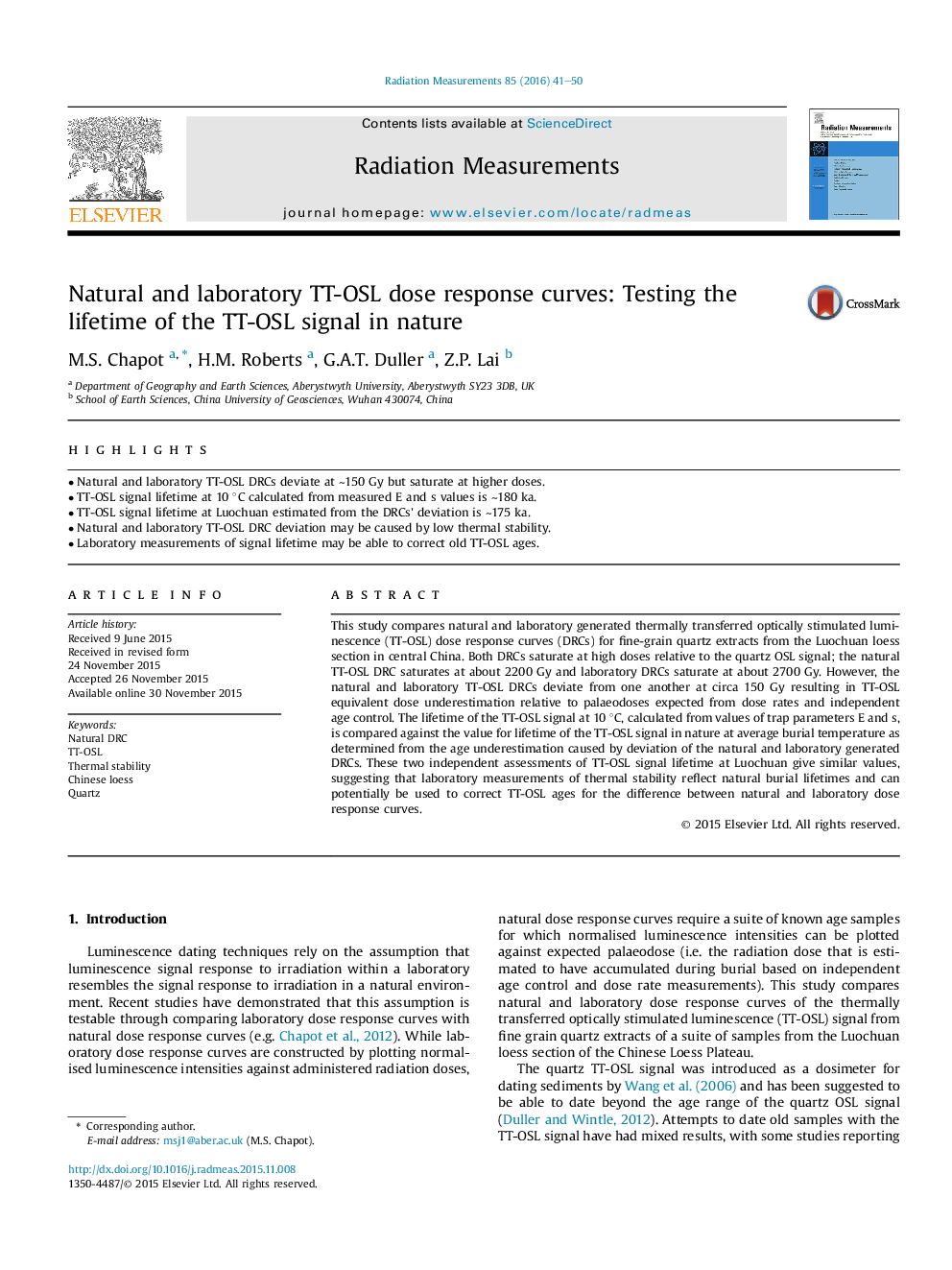| Article ID | Journal | Published Year | Pages | File Type |
|---|---|---|---|---|
| 8250767 | Radiation Measurements | 2016 | 10 Pages |
Abstract
This study compares natural and laboratory generated thermally transferred optically stimulated luminescence (TT-OSL) dose response curves (DRCs) for fine-grain quartz extracts from the Luochuan loess section in central China. Both DRCs saturate at high doses relative to the quartz OSL signal; the natural TT-OSL DRC saturates at about 2200 Gy and laboratory DRCs saturate at about 2700 Gy. However, the natural and laboratory TT-OSL DRCs deviate from one another at circa 150 Gy resulting in TT-OSL equivalent dose underestimation relative to palaeodoses expected from dose rates and independent age control. The lifetime of the TT-OSL signal at 10 °C, calculated from values of trap parameters E and s, is compared against the value for lifetime of the TT-OSL signal in nature at average burial temperature as determined from the age underestimation caused by deviation of the natural and laboratory generated DRCs. These two independent assessments of TT-OSL signal lifetime at Luochuan give similar values, suggesting that laboratory measurements of thermal stability reflect natural burial lifetimes and can potentially be used to correct TT-OSL ages for the difference between natural and laboratory dose response curves.
Related Topics
Physical Sciences and Engineering
Physics and Astronomy
Radiation
Authors
M.S. Chapot, H.M. Roberts, G.A.T. Duller, Z.P. Lai,
